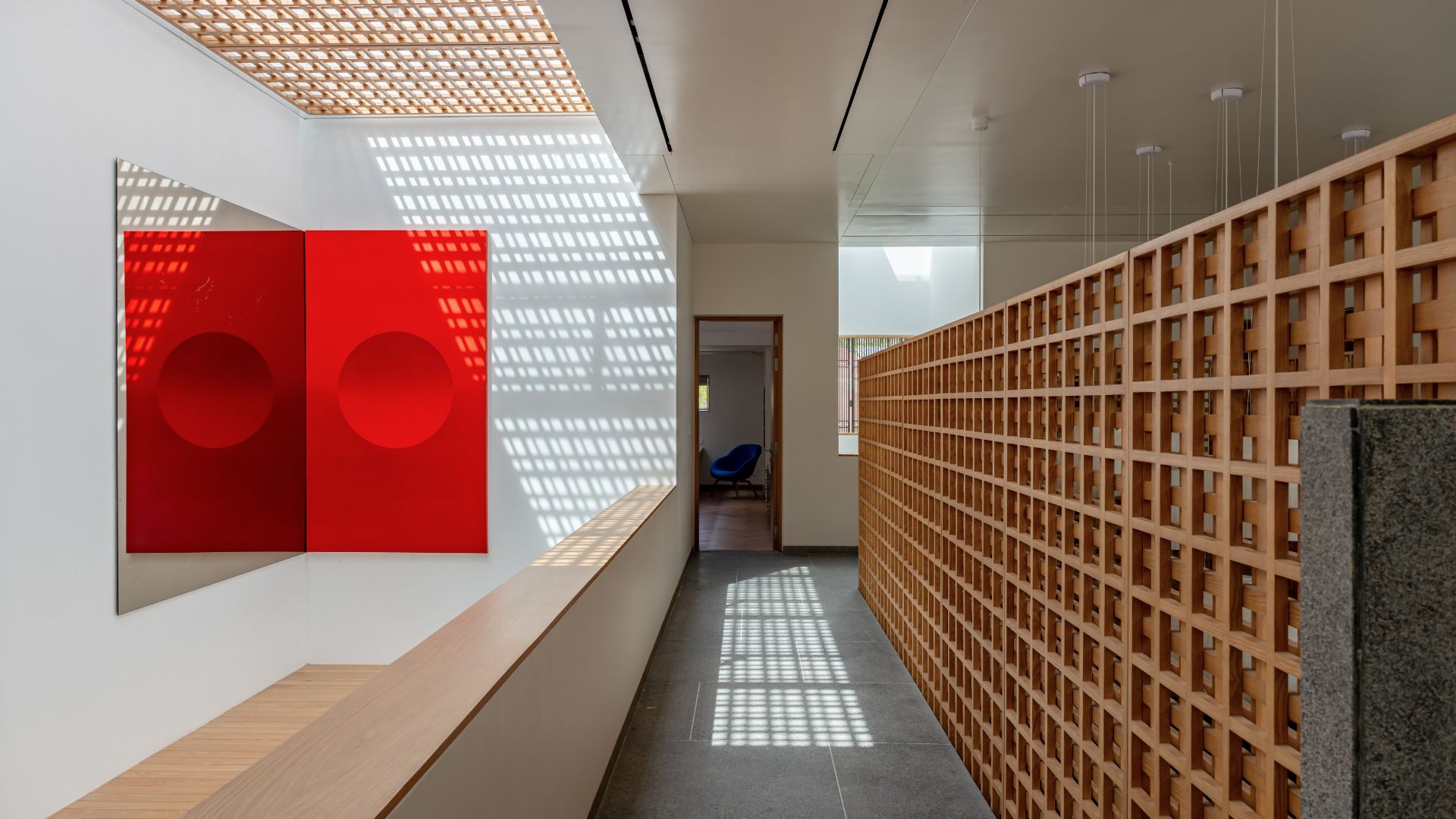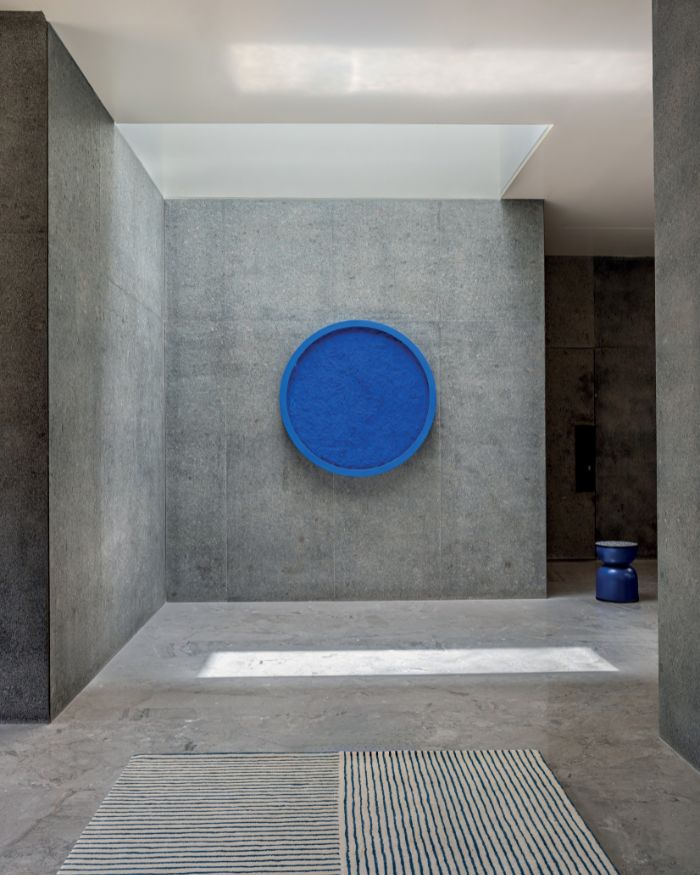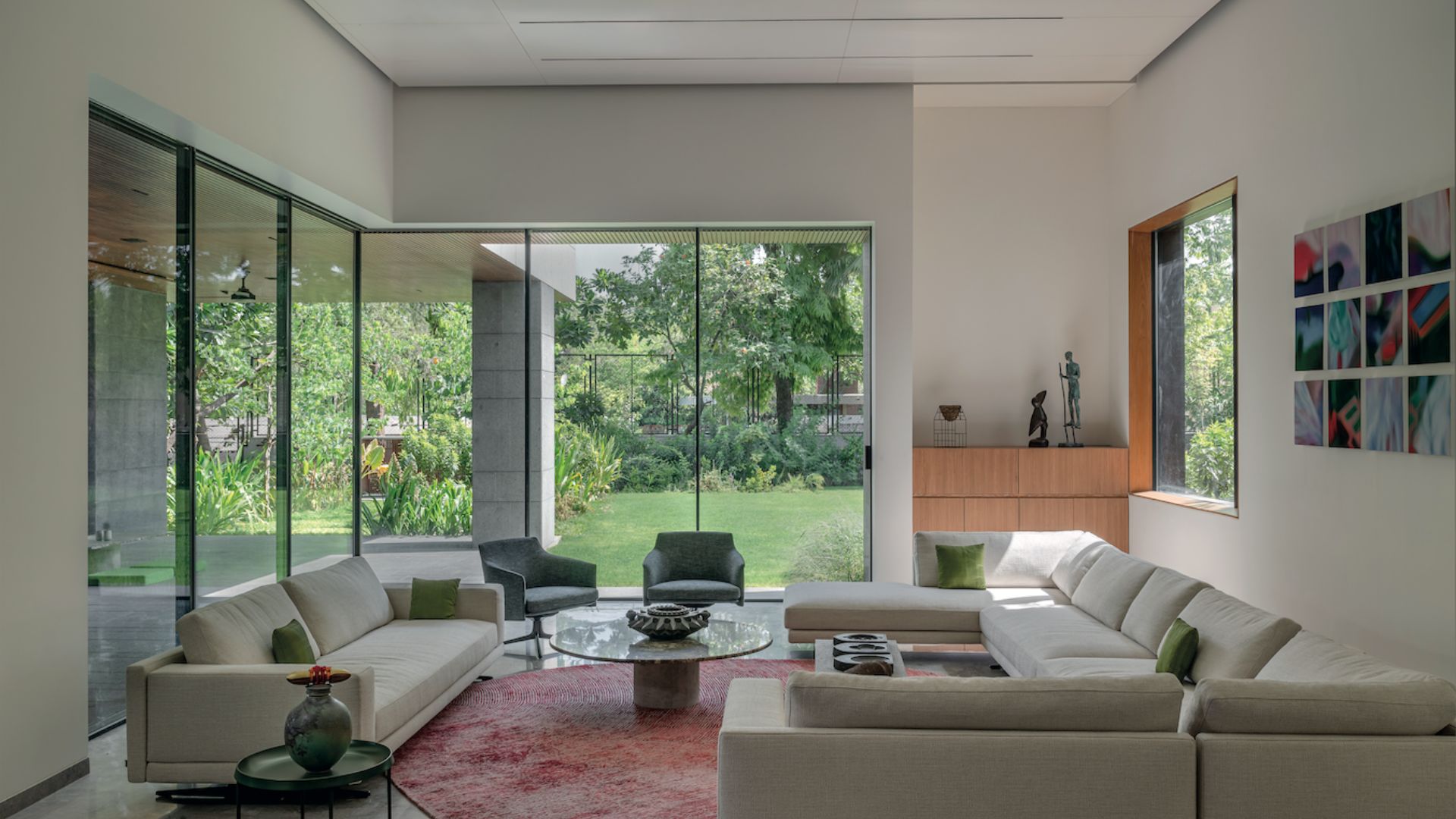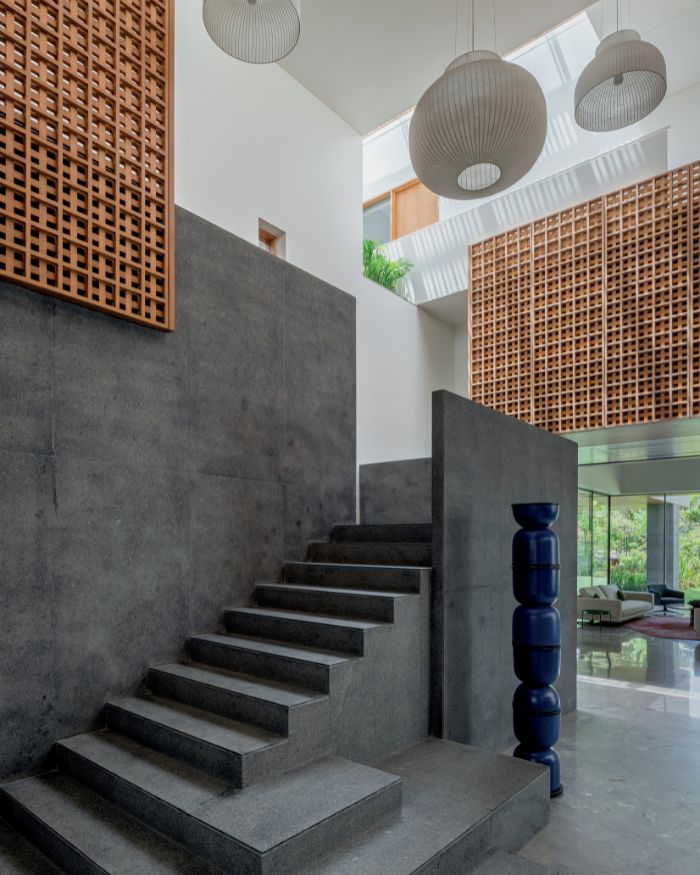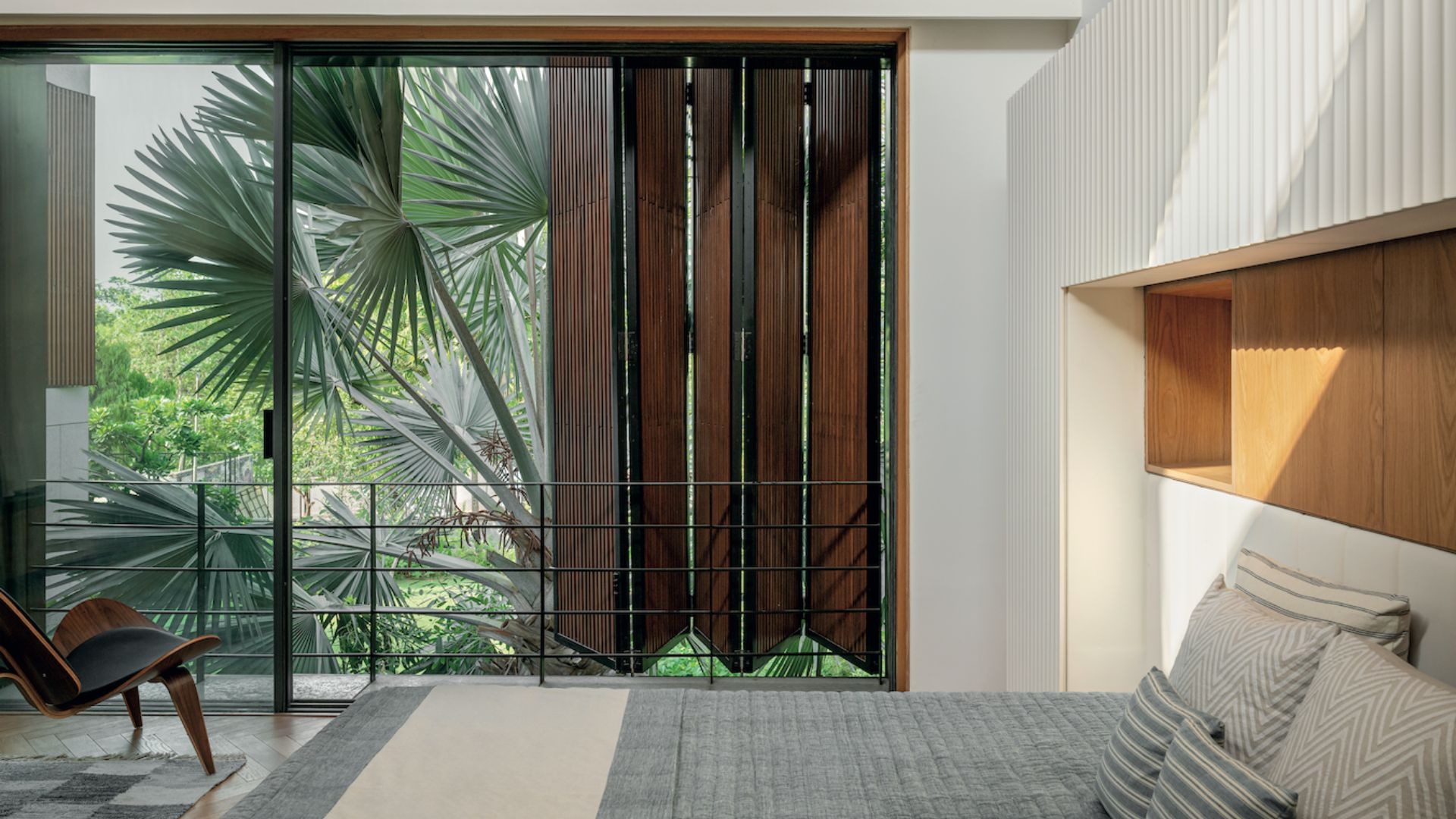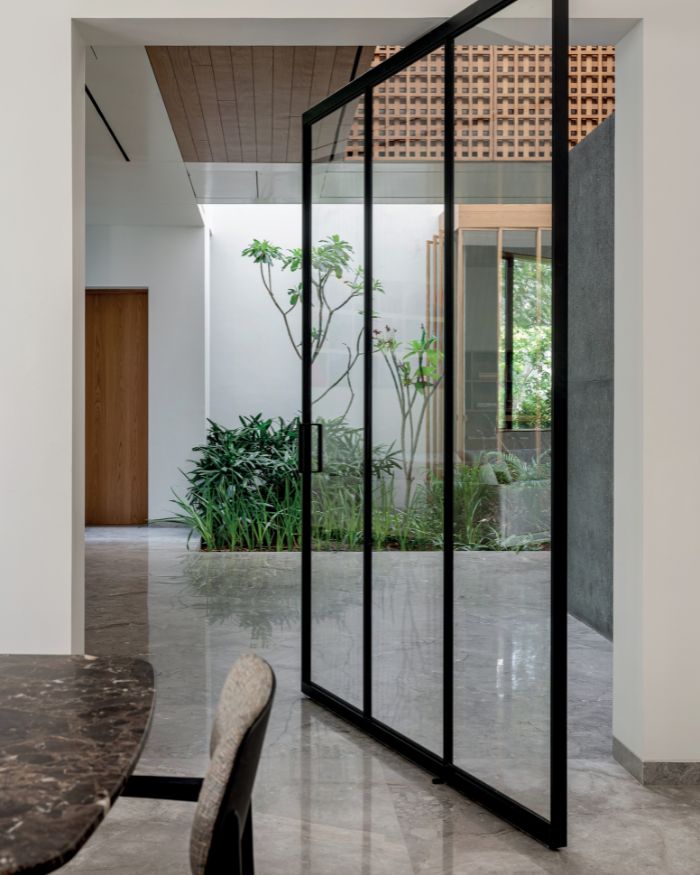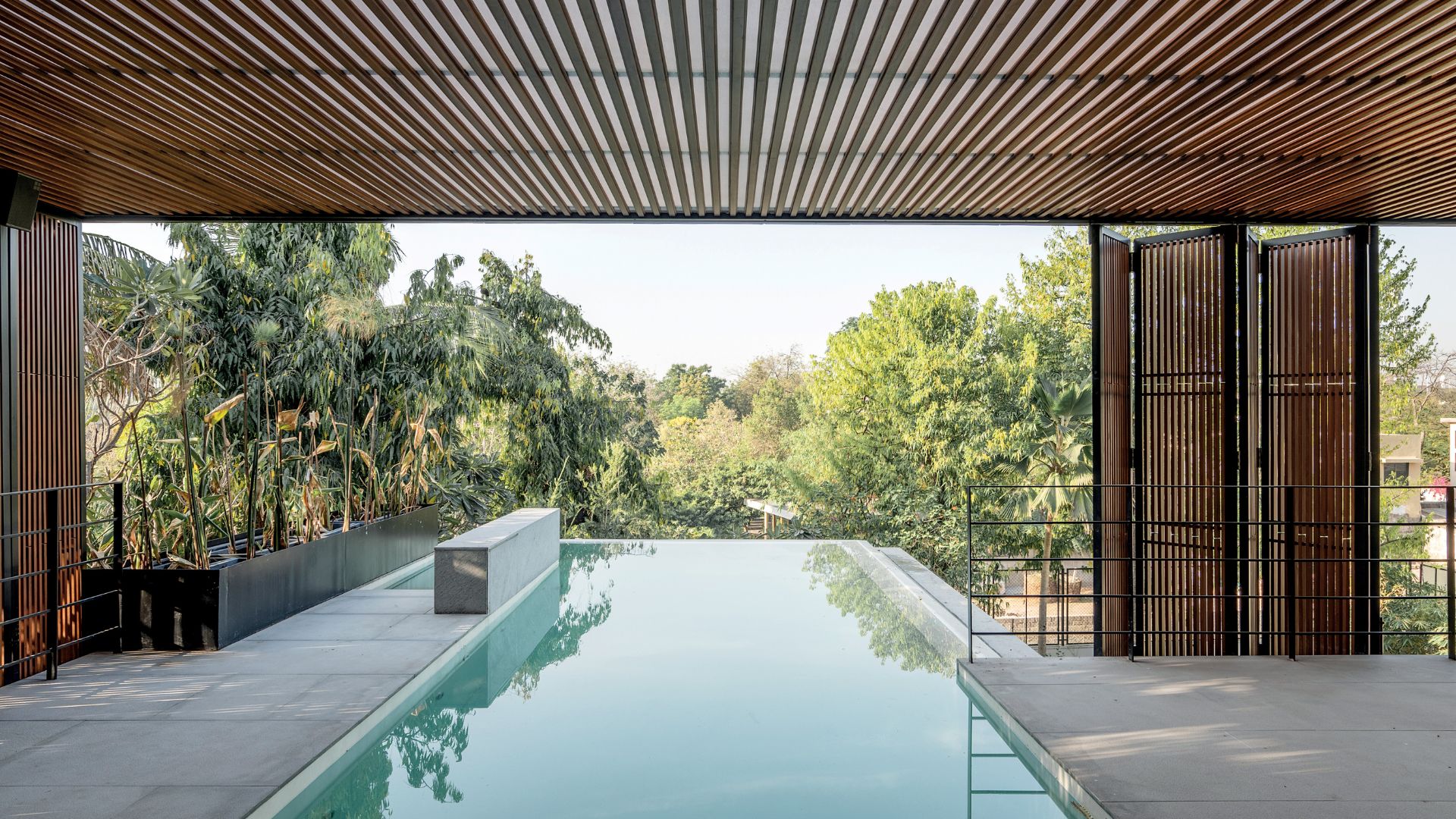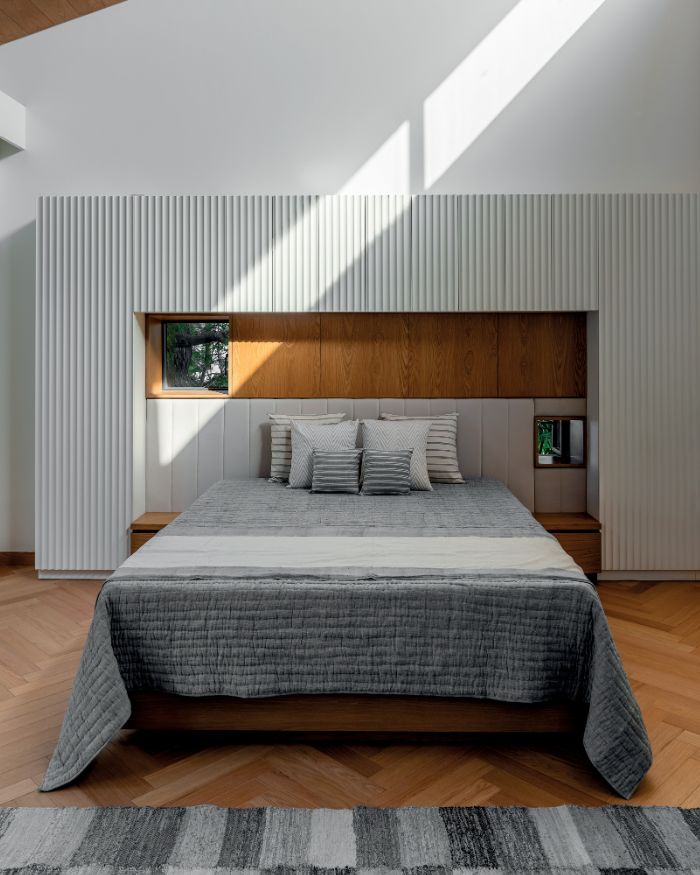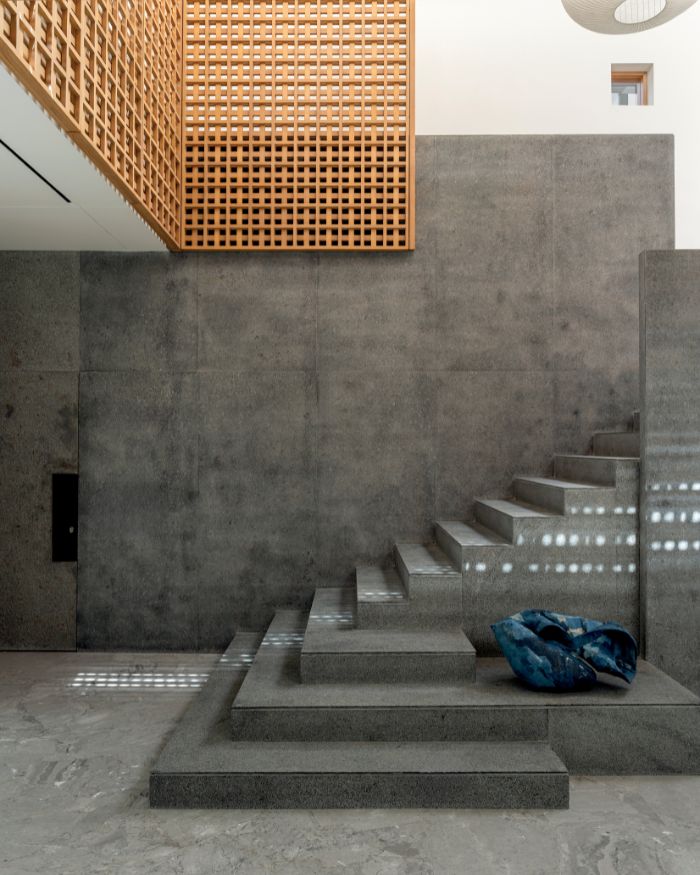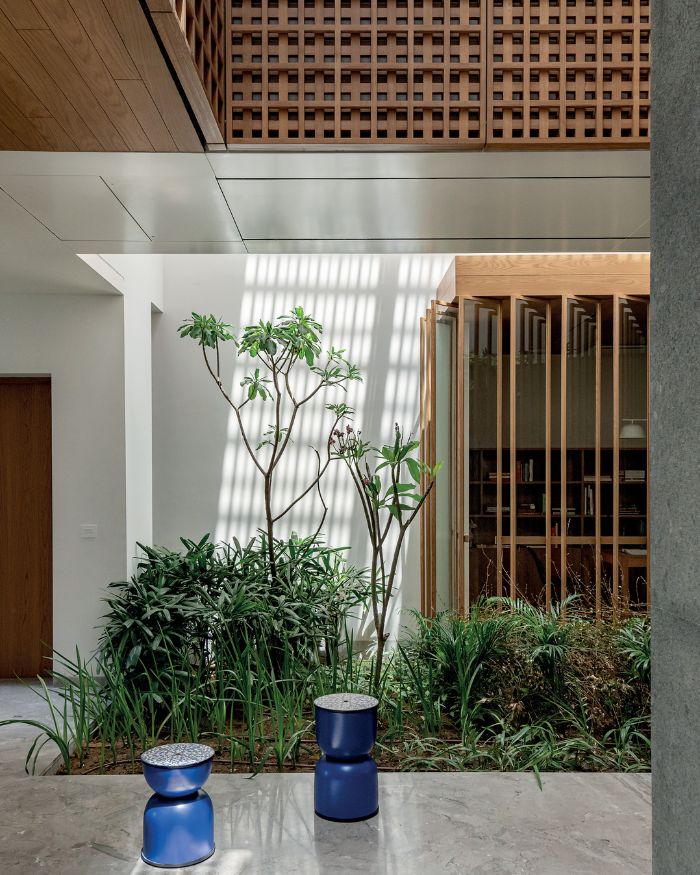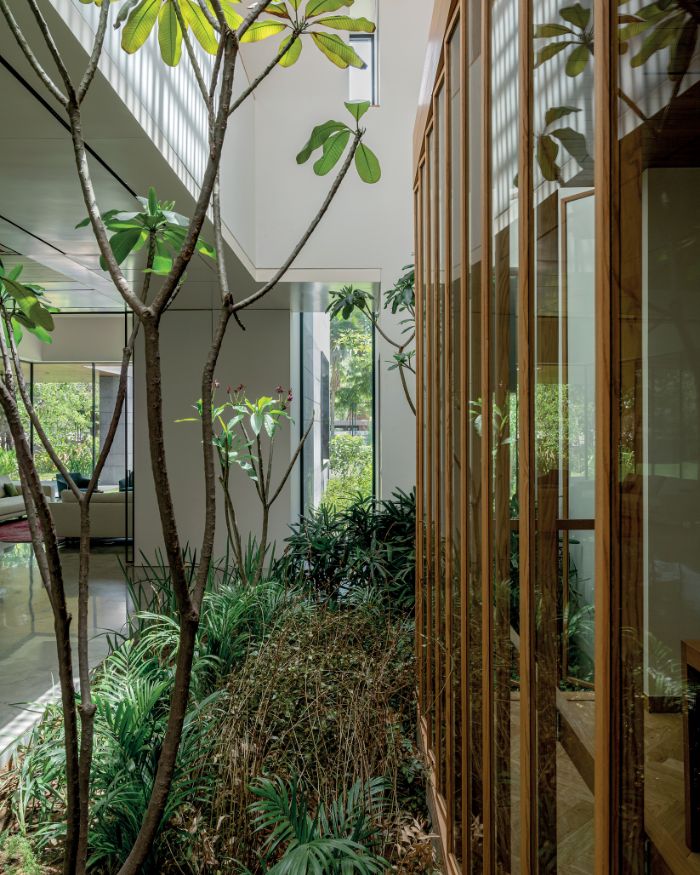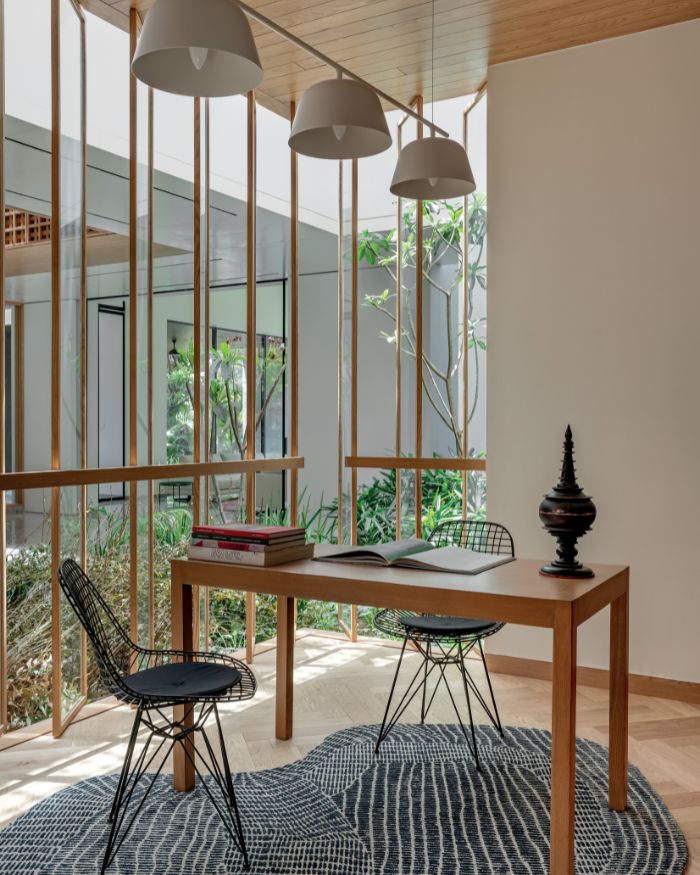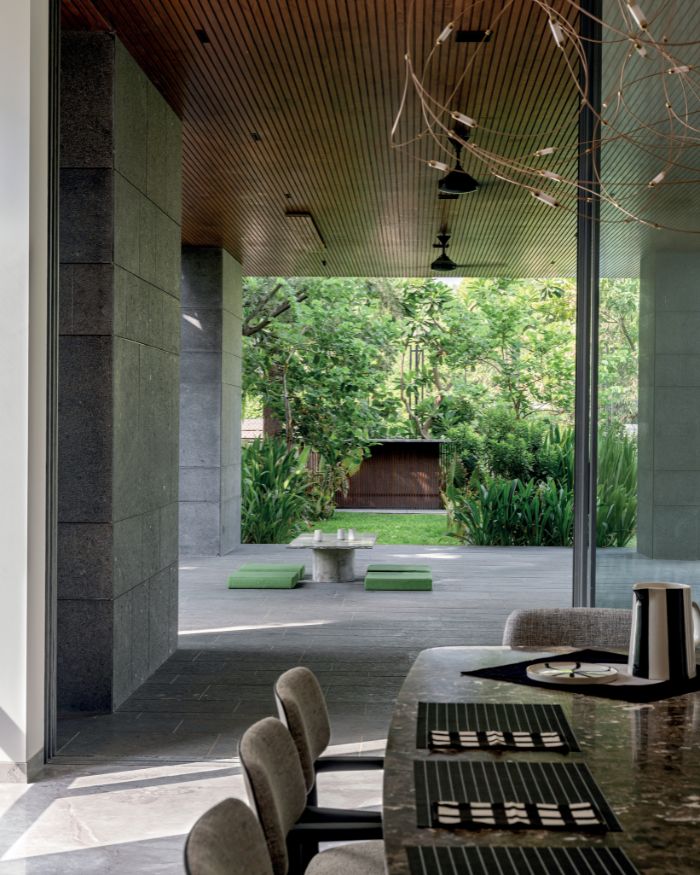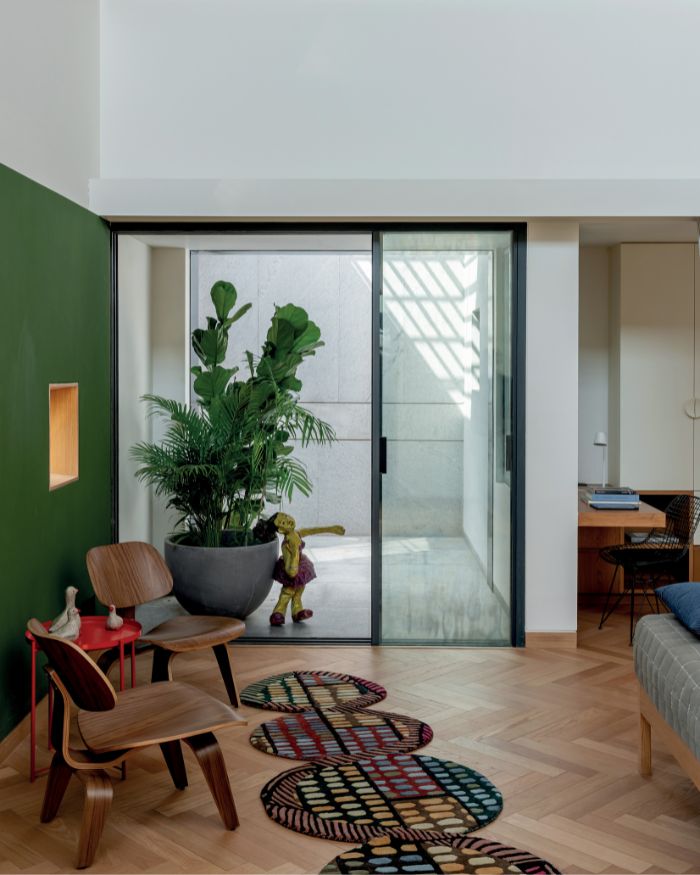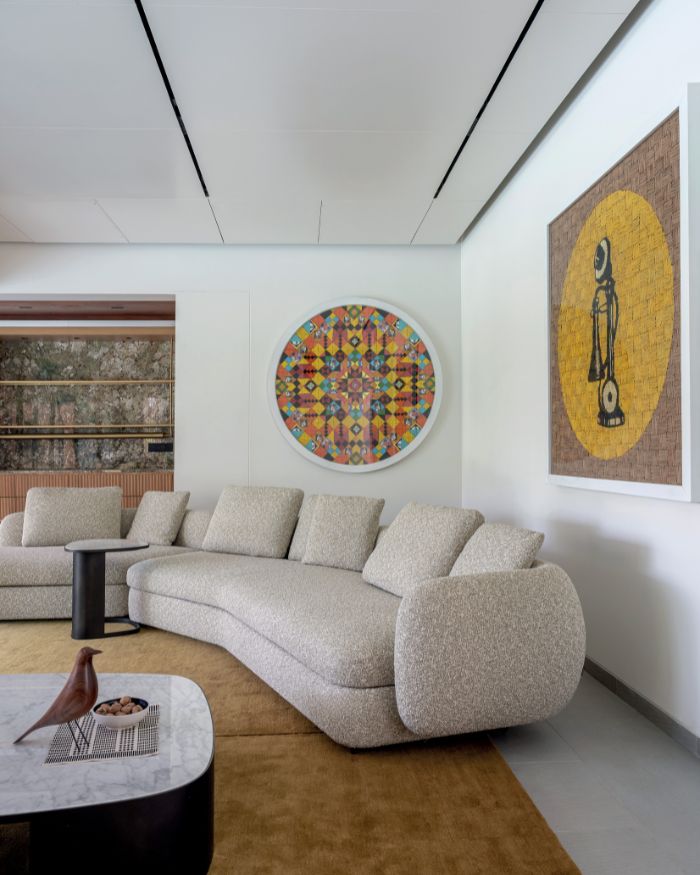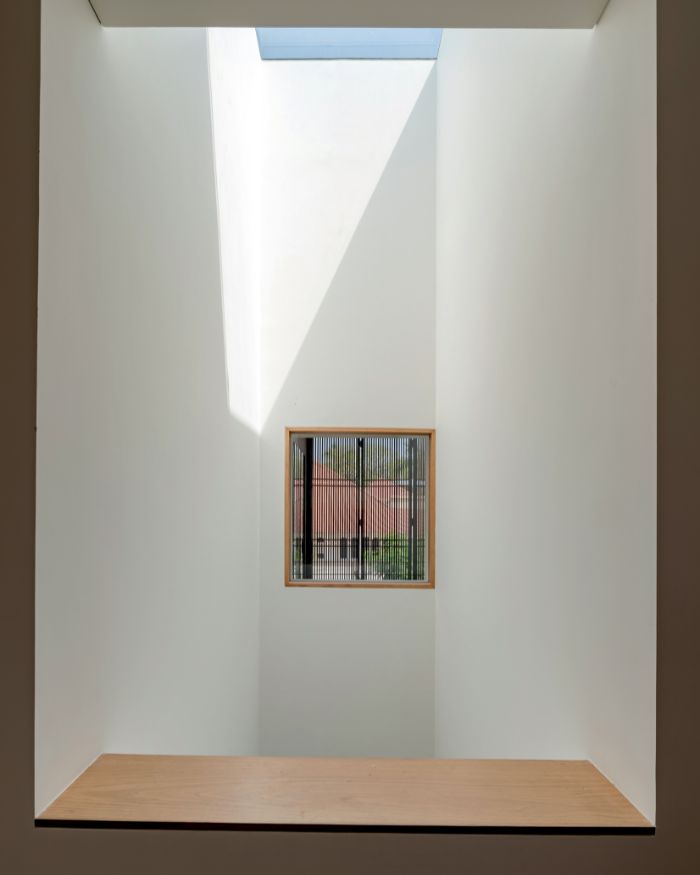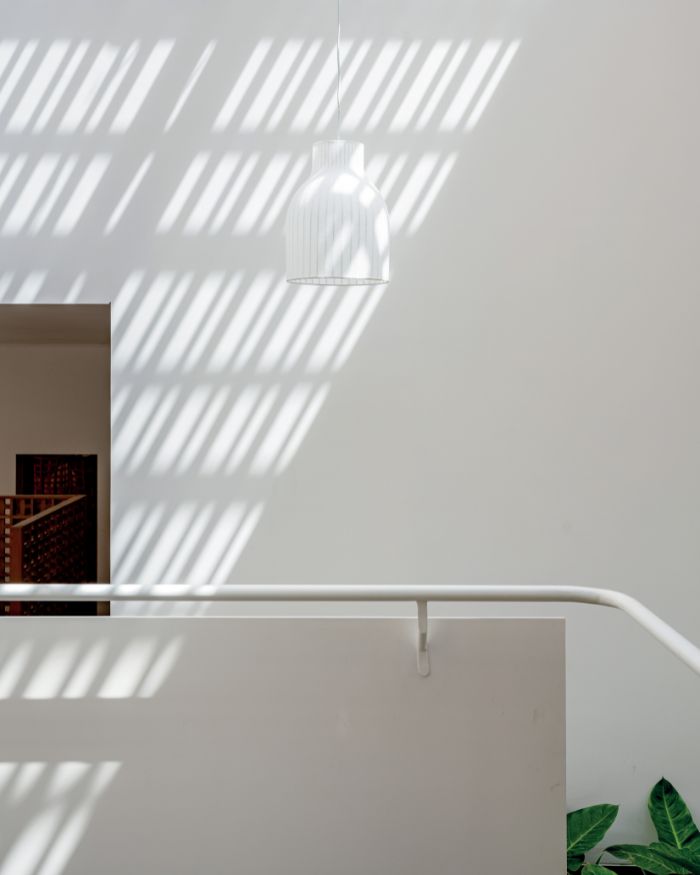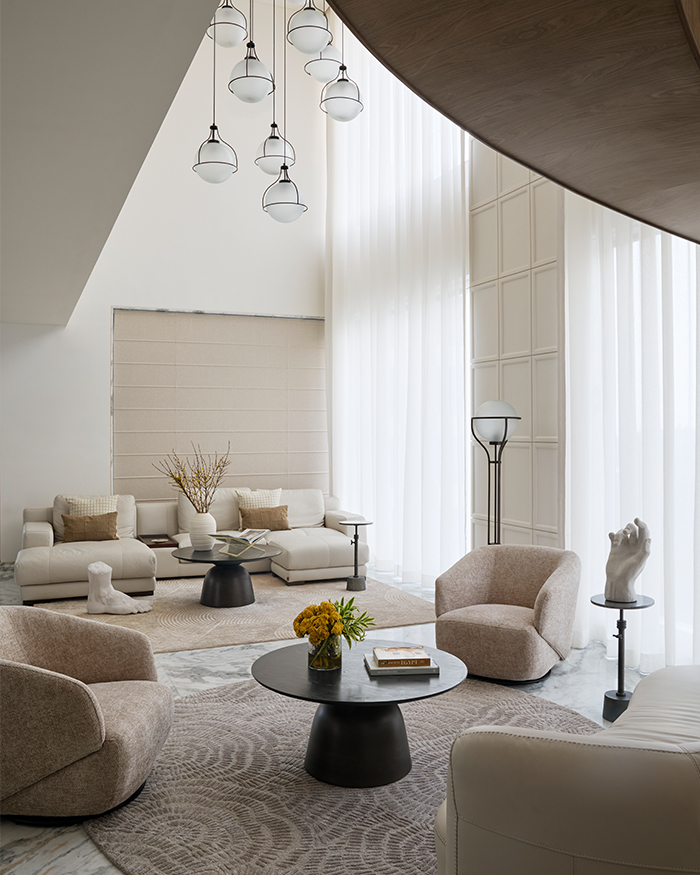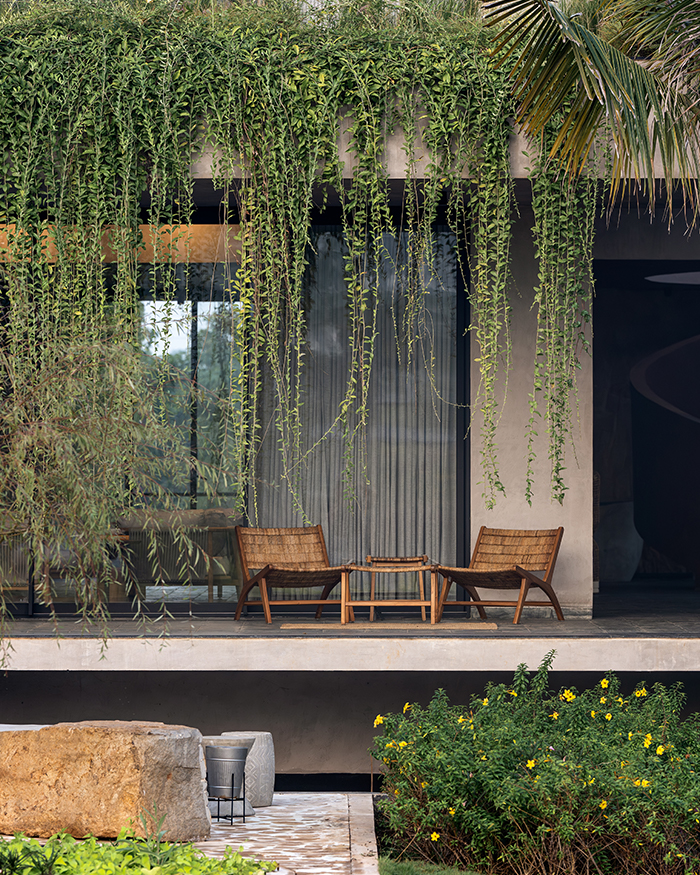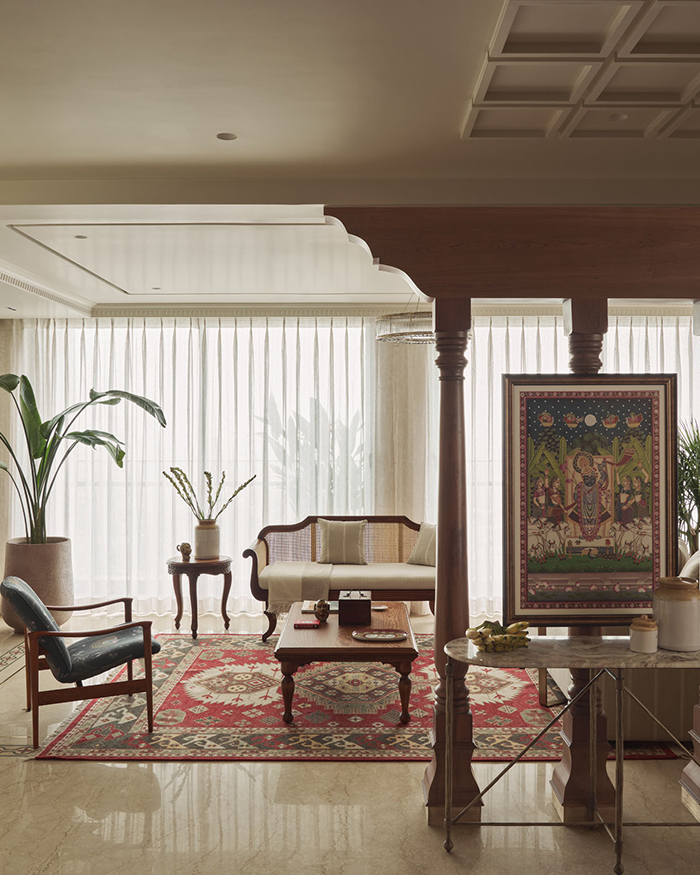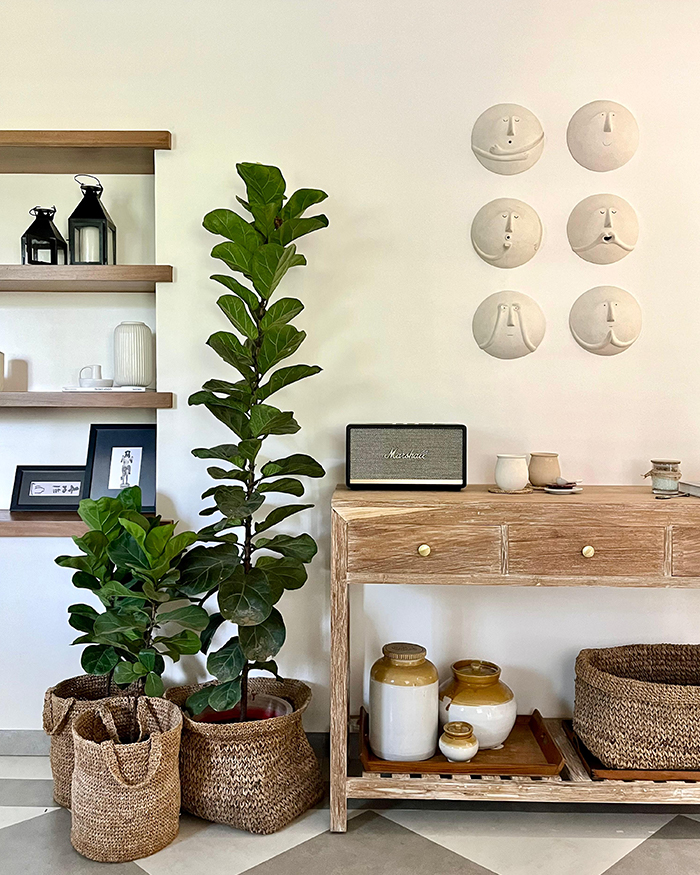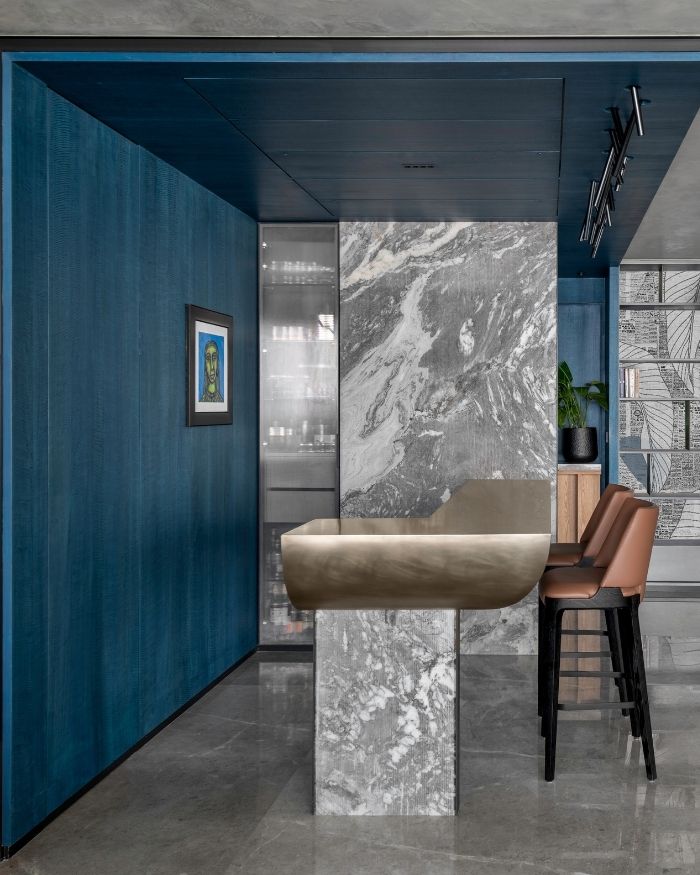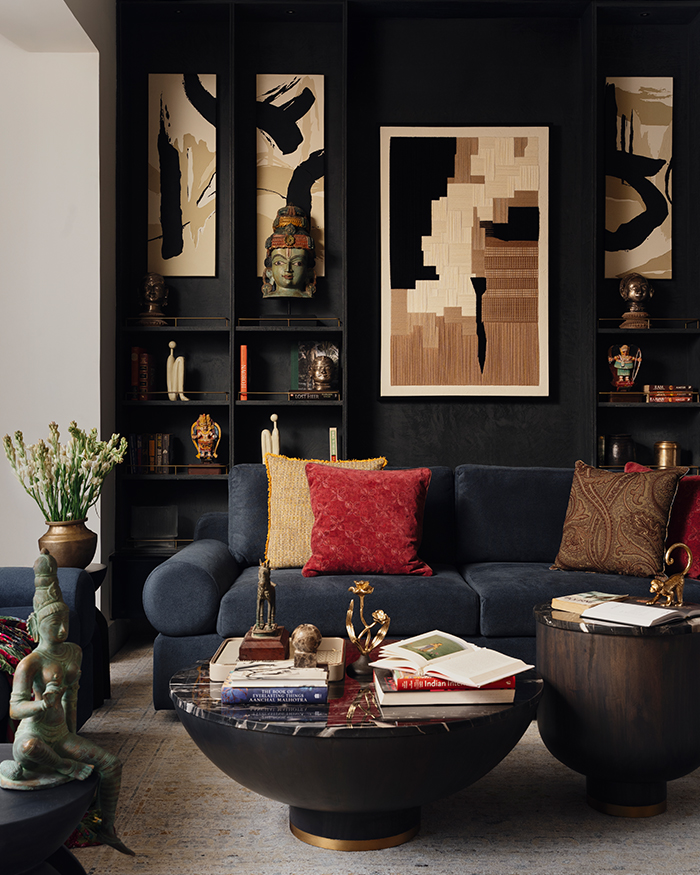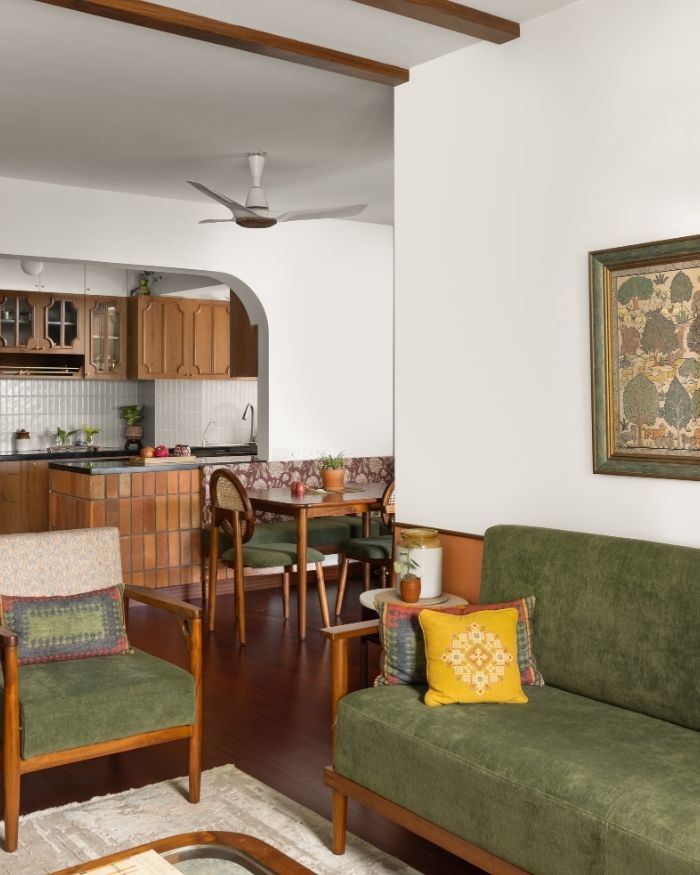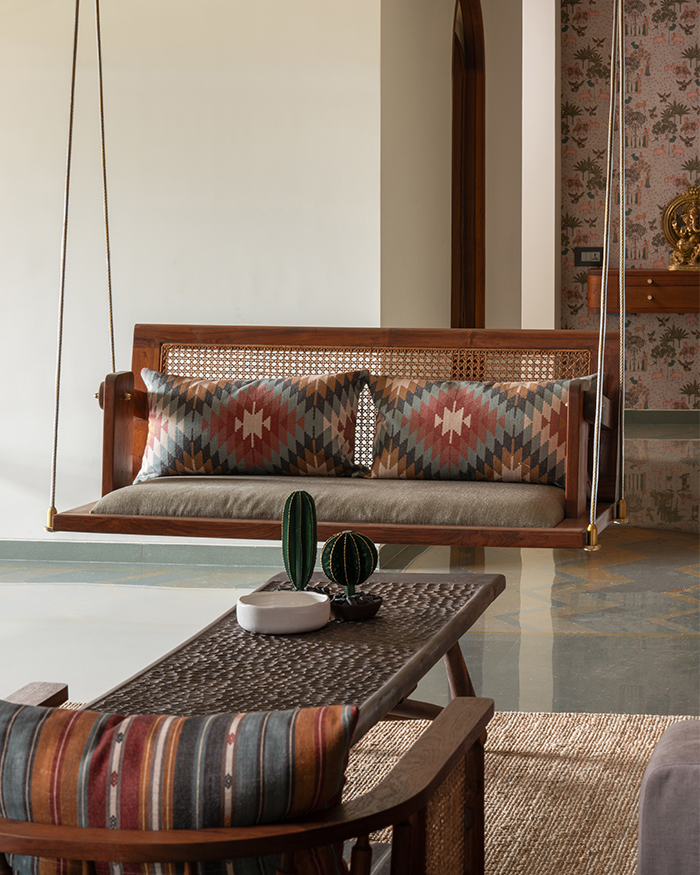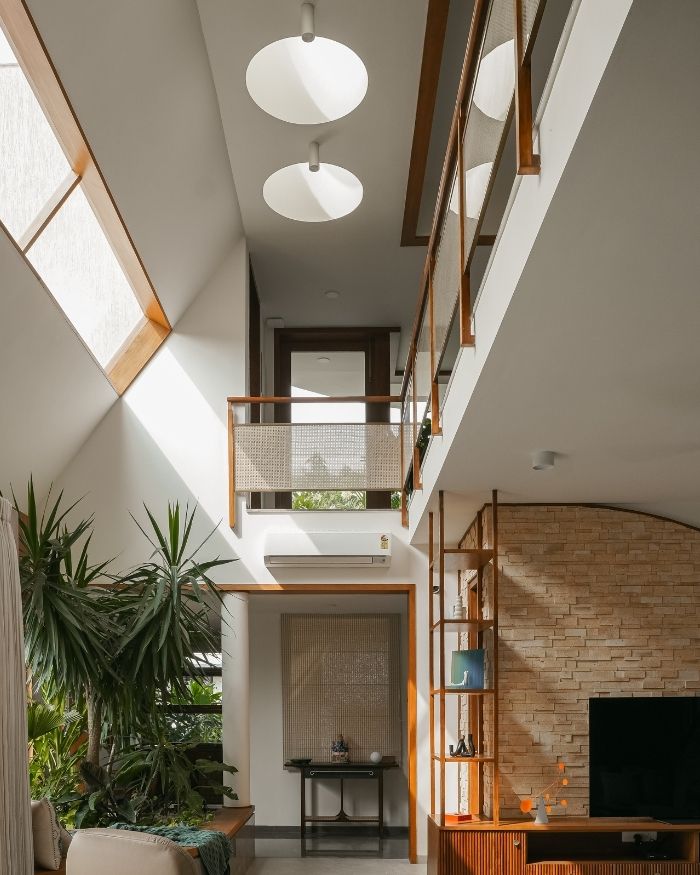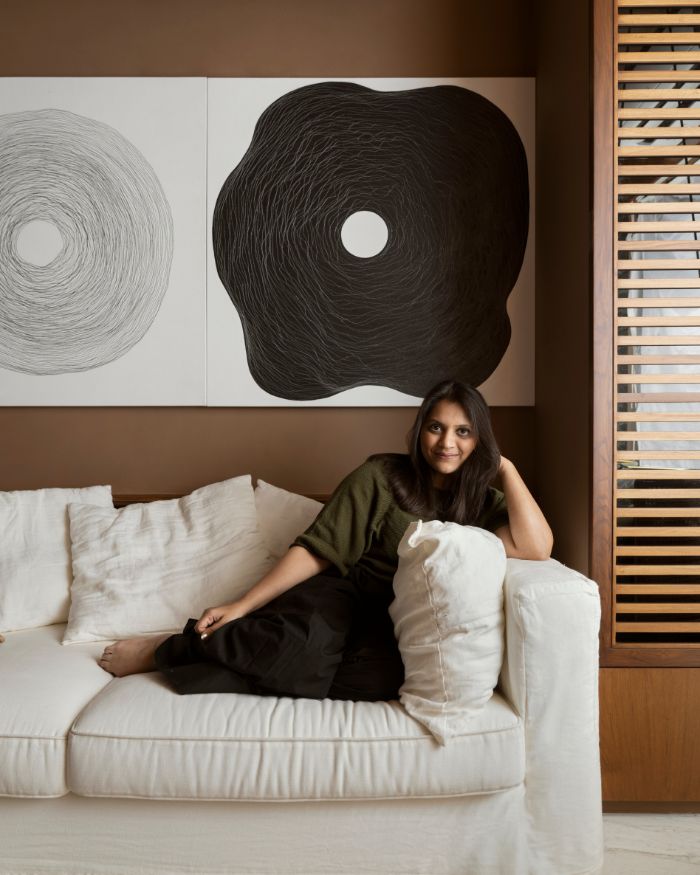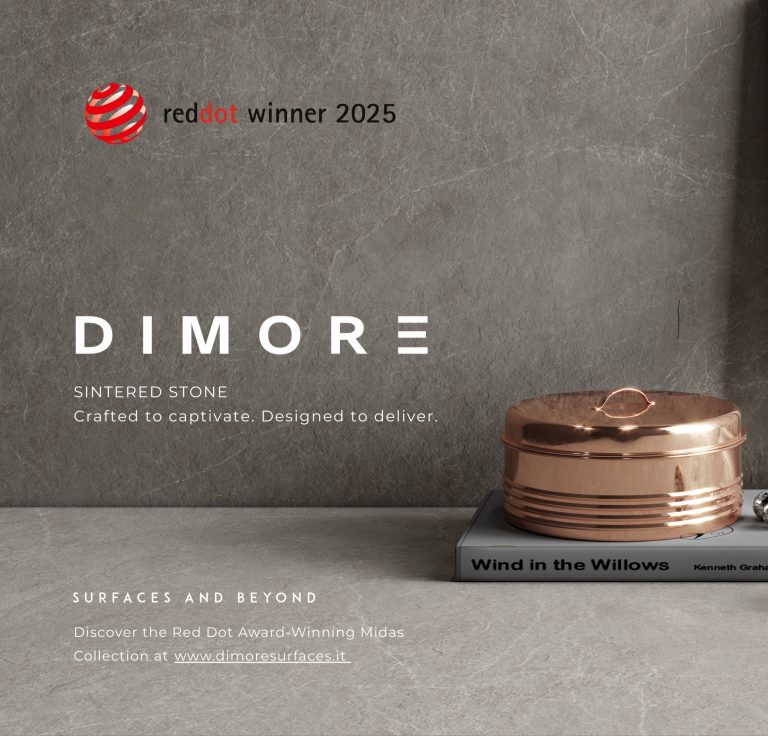Sunlight dappled on the monolithic envelope, as Sonke tells us, “A facade is not about the image, it is about the volume,” explaining how rather than a front lawn, the 13,000 sq ft home chooses to look inwards. Having followed the designer outside in the sweltering sun, barefoot (with ample regret), the sound of gurgling water near the entrance seemed all too welcoming. We eventually make our way inside. A garden peeks from the side. (Perhaps later, we were melting from the heat.) The space delivered no easy answers to my questions — its narrative intertwined in subtle gestures, crafted in stillness and surprises. An enigma, in more ways than one. Outside, the pigeons roost in trees that predate the built form. Inside is a playscape of light and shadow. How does architecture shift from material space into life’s witness and eventually into its participant? This villa in Ahmedabad by Khushnu Panthaki and Sonke Hoof of Studio SANGATH is a conversation on art, memory and some discoveries.
“When you design a house, it also influences the way the inhabitants think” – Khushnu Panthaki Hoof

